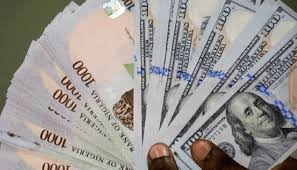The Nigerian naira on Wednesday reached its strongest level in over two months, closing at ₦1,565.46 to the dollar at the official foreign exchange (FX) market. This marked a ₦13.82 appreciation from Tuesday’s rate of ₦1,579.28, signalling a continued phase of relative stability and investor optimism around Nigeria’s ongoing FX and macroeconomic reforms.
Data from the Central Bank of Nigeria (CBN) confirmed that this was the highest the naira has traded since April 4, 2024, when it recorded ₦1,567.02 per dollar. The latest gain represents a 0.9% increase at the official Nigerian Foreign Exchange Market (NFEM), reinforcing confidence in the government’s policy direction.
In the parallel market, widely known as the black market, the naira also strengthened. The local currency gained ₦5 to trade at ₦1,605 per dollar, up from ₦1,610 recorded on both Monday and Tuesday. Though the black market rate still slightly trails behind the official window, the convergence between the two markets is a marked shift from the wide margins that characterised the FX market in previous years.
CBN Governor Olayemi Cardoso attributed the gains to deliberate policy actions and market discipline introduced by the apex bank over recent months. In a statement, he credited the development to reforms and efforts to restore credibility in Nigeria’s FX management system.
“Thanks to our sustained reforms and enhanced policy transparency, the naira has stabilised at a far more sustainable level relative to the U.S. dollar,” said Cardoso. “For the first time in years, the disparity between the official and parallel market rates has virtually disappeared, and speculative arbitrage opportunities have been drastically reduced.”
The CBN governor highlighted that these reforms have successfully reduced distortions in the FX market, leading to improved foreign capital inflows through legitimate channels. According to him, the narrowing of the FX gap has significantly reduced arbitrage and speculation, allowing for a more predictable trading environment.
Cardoso further stated that Nigeria’s external reserves have improved significantly, crossing the $38 billion mark. “Our foreign exchange reserves have now risen to over $38 billion, giving us close to 10 months of import coverage. This provides the country with a more robust buffer to withstand external shocks such as falling oil prices or global market volatility,” he said.
Analysts and economists have also expressed cautious optimism about the naira’s resurgence. In its latest report, the research team at FSDH Merchant Bank Limited welcomed the CBN’s progress, but warned that maintaining currency stability will require more than just monetary policy interventions.
FSDH analysts noted that structural economic reforms and stronger fiscal discipline are critical in ensuring long-term macroeconomic balance. “While the FX market is showing signs of improvement, deeper structural changes are needed to anchor inflation expectations, stimulate growth, and reduce vulnerability to external shocks,” the report said.
They urged the CBN to stay committed to its current FX framework while pushing for broader economic adjustments, particularly in sectors like agriculture, power, and manufacturing, which could drive non-oil exports and enhance Nigeria’s dollar earnings.
The naira’s performance in recent weeks comes after months of volatility that saw the currency depreciate sharply due to dollar shortages, speculation, and inconsistent policies. However, market watchers say recent developments, including the harmonisation of exchange rates and increased transparency by the CBN, have helped rebuild confidence.
In addition to market reforms, the federal government’s firm stance on FX liberalisation and better coordination between monetary and fiscal authorities have been praised by stakeholders in the financial services sector.
Going forward, the sustainability of naira stability will likely depend on continued discipline, rising non-oil exports, improvements in foreign investor confidence, and the steady flow of FX through autonomous sources.
